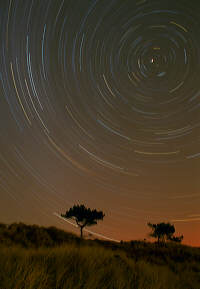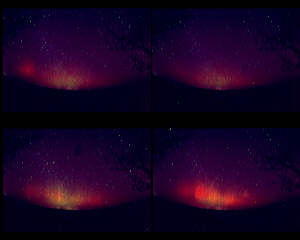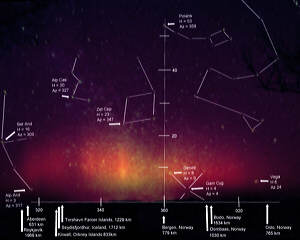
|
|
This picture of the northern sky was exposed for four hours in the night of 22 - 23 December
2000. The curved lines are the trails of stars that circle around Polaris, the north star.
On closer inspection, even Polaris seems to circle around a point that is called the northern celestial pole.
This apparent stellar movement is caused by the daily rotation of the earth around her axis. It is the same effect
that makes the sun or moon rise and set.
Near the end of the exposure, red aurora became weakly visible low over the northern horizon.
|

|
|
Meanwhile, at a near location, a time-lapse camera was set up to record these northern lights.
Because space weather forecasters only expected minor geomagnetic disturbances and therefore weak aurora,
each frame was exposed for a full three minutes. After 31 frames the filming was stopped because dense icy fog rolled in and visibility
became less than 20 meters.
|

|
|
Red aurora forms at a height of about 150 to 400 kilometers in the atmosphere.
Green aurora occurs at lower heights of 100 - 150 km and only appears when the geomagnetic disturbances are relative strong.
Yellow aurora is merely green aurora seen in the same direction as red aurora: red plus green light makes yellow light.
Since this auroral display was low over the horizon, it happened far north of the Netherlands, probably some 500 to 1500 kilometers away.
|
|